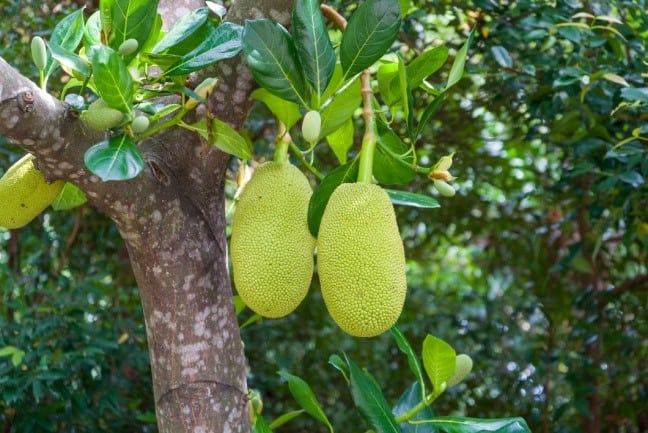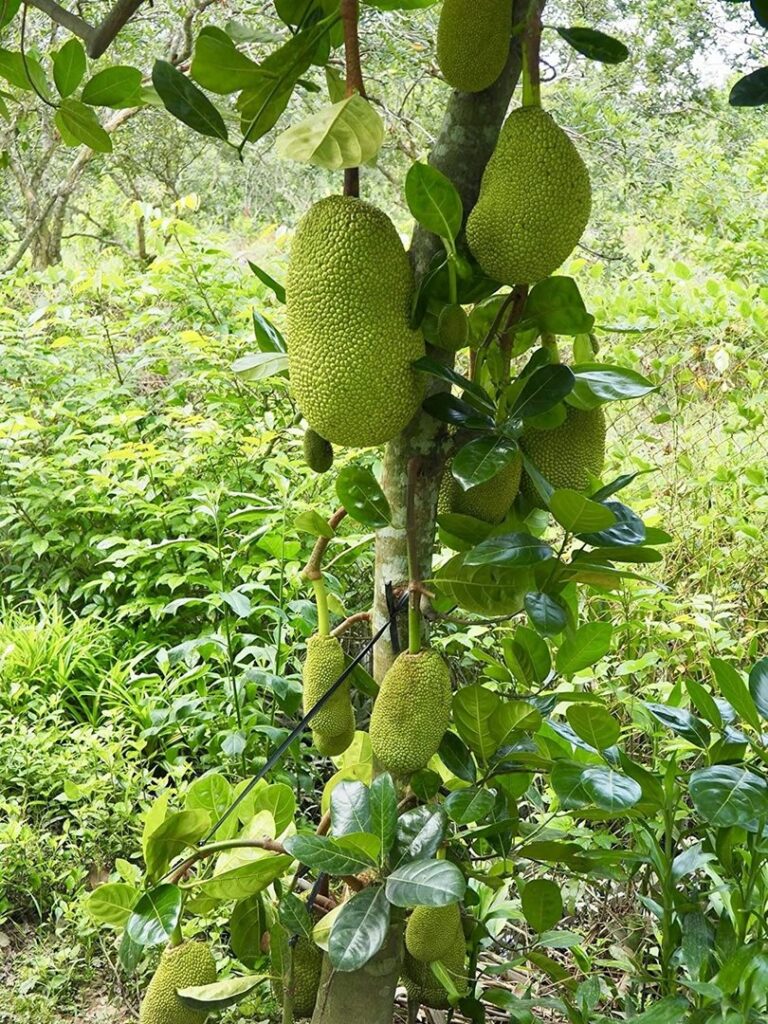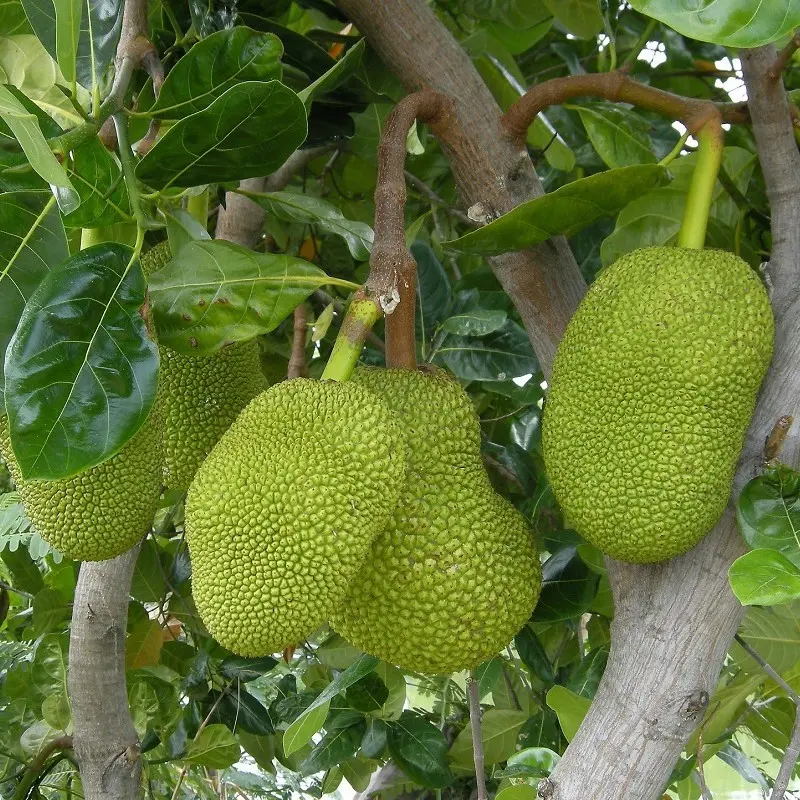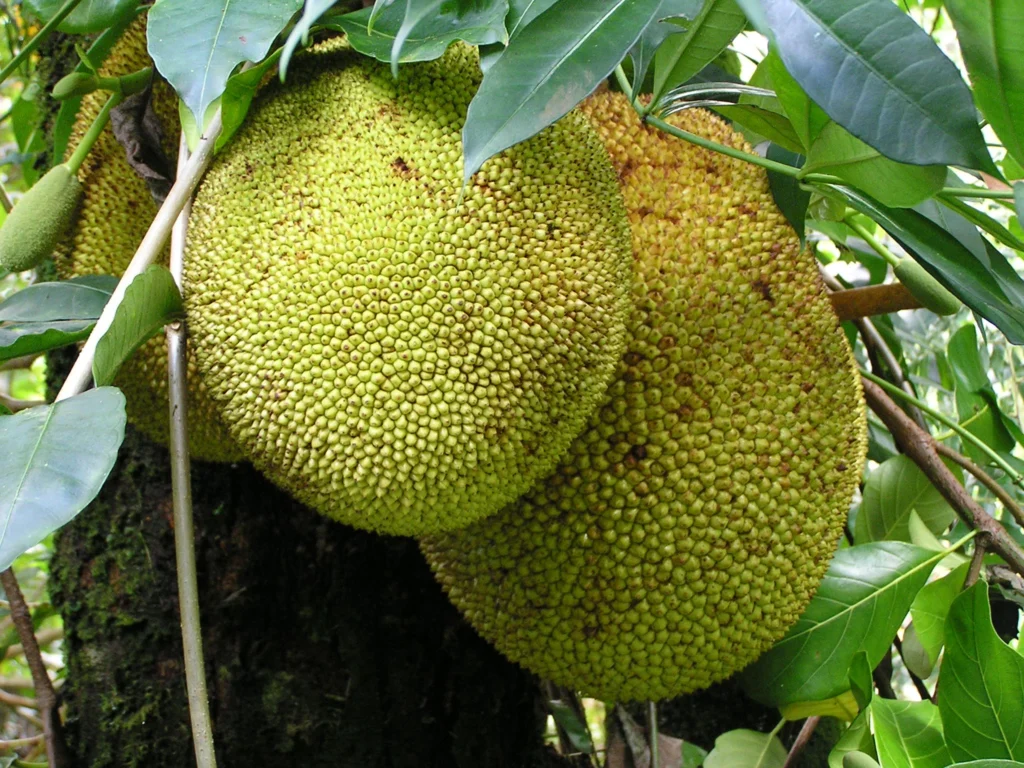The jackfruit, Artocarpus heterophyllus is a fruiting plant in the family of Moraceae, native to India and Malayan. The fruit consist of fibrous , whitish core. Ripe jackfruit is naturally sweet with subtle pineapple or banana like flavor when eaten.
AJack fruit was first found in rain forests of India but farmers now grow in many parts of the world, including Thailand, Australia, Africa, etc. The outer layer of the fruit is green, yellow, etc. The fruit smells off like raw onions when it is ripe, the pulp inside the fruit tastes far better. There are two types of jackfruit, one is small and pulpy and the other one is not so sweet and has a crispy crunchy flesh. Jackfruit is full of vitamin A and vitamin C, riboflavin, calcium, potassium, iron, zinc, etc. It contains minerals, fiber, protein, and it contains no fats and bad cholesterol. It contains carotenoids which give yellow color to the fruit, and are high in vitamin A. Jackfruit is rich in antioxidants that prevents cell damage in your body. The pulp is rich in disease fighting properties whereas the seeds may contain even more.
Jackfruit is high in fiber, which makes you feel fuller for longer resulting in healthy bowel movements.
The word jackfruit comes from Portuguese jaca, which in turn is derived from the Malayalam language term chakka (ചക്ക), when the Portuguese arrived in India at Kozhikode (Calicut) on the Malabar Coast (Kerala) in 1499. Later the Malayalam name ചക്ക (chakka) was recorded by Hendrik van Rheede (1678–1703) in the Hortus Malabaricus, vol. iii in Latin. Henry Yule translated the book in Jordanus Catalani’s (fl. 1321–1330) Mirabilia descripta: the wonders of the East. This term is in turn derived from the Proto-Dravidian root kā(y) (“fruit, vegetable”).
The common English name “jackfruit” was used by physician and naturalist Garcia de Orta in his 1563 book Colóquios dos simples e drogas da India. Centuries later, botanist Ralph Randles Stewart suggested it was named after William Jack (1795–1822), a Scottish botanist who worked for the East India Company in Bengal, Sumatra, and Malaya.
Nangka is another name used in Philippine English borrowing from Tagalog related to nangkà in Cebuano and in Malay, both from the same Austronesian language family.





Source: Wikipedia

